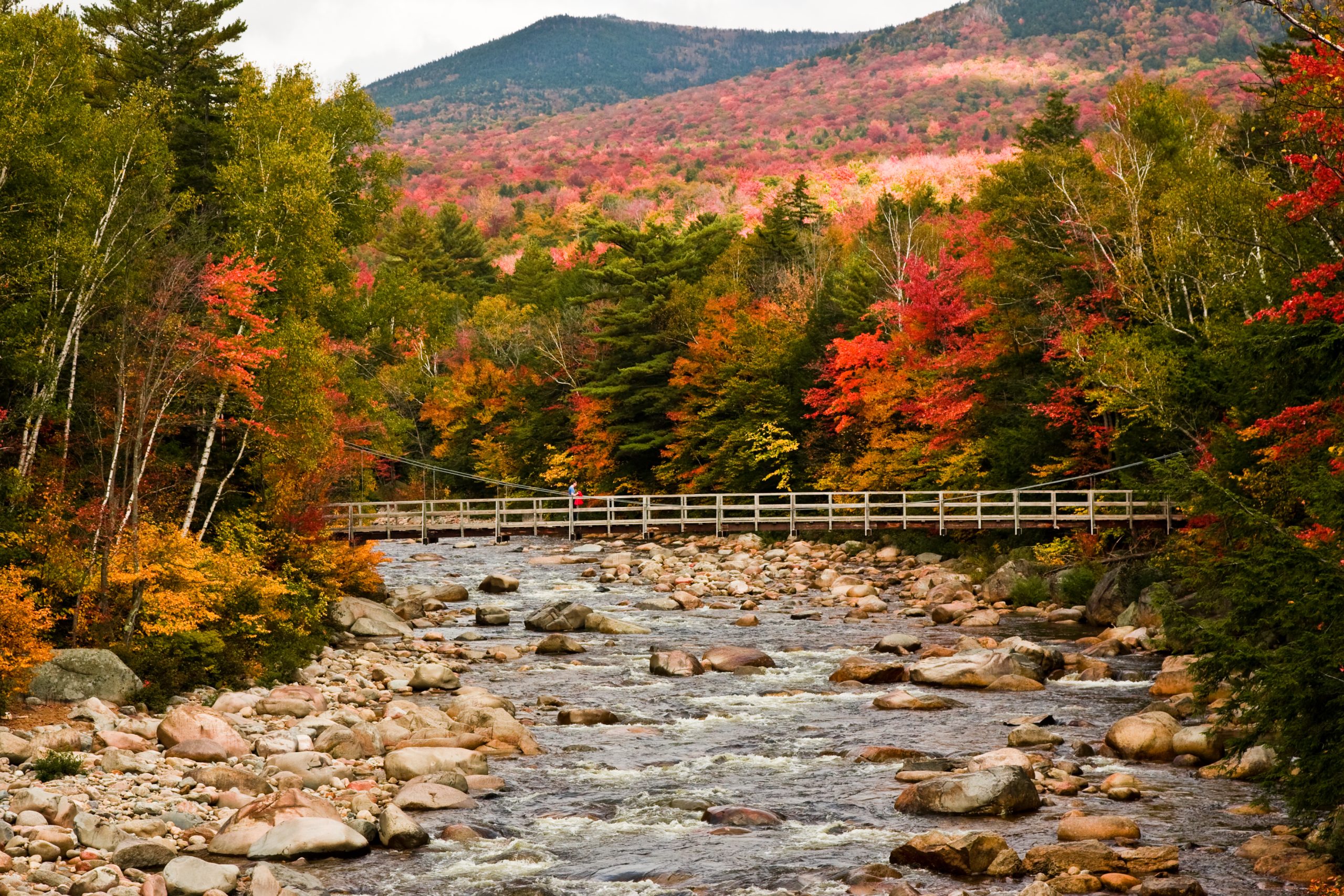How the Kancamagus Highway Got Its Name and How to Pronounce It
One of the most scenic roads in America lies in the heart of the New Hampshire mountains. Learn the history of the Kancamagus Scenic Byway.

How the Kancamagus Highway Got Its Name and How to Pronounce It
Photo Credit : Jeff FolgerExcerpt from “The Kancamagus Highway, New Hampshire,” Yankee Magazine, March 1985.
“No gas for the next 32 miles” says the sign at the western end of the Kancamagus Highway in Lincoln, New Hampshire. No gas, no stores, no houses — nothing but a hundred thousand acres of late-winter stillness, and a narrow strip of windswept road lined with birches like a colonnade of bones.
How Did the Kancamagus Highway Get Its Name?
The Kancamagus Highway (also referred to as the Kancamagus Scenic Byway, or simply “The Kanc”) was named after the last sagamore, or chief, of the Pennacooks, who dominated a confederation of Indian tribes living in New Hampshire in the 17th century. But by 1685, when Kancamagus became sagamore, the Pennacooks were only a shadow of what they had been. Kancamagus and his predecessors tried to live in peace with the English settlers, but they were betrayed and humiliated.
Major Richard Waldron of Dover invited the Pennacooks to a feast, then seized a number of the guests and sent them to Boston in chains. The Pennacooks had no choice but to flee from their homeland in the upper Merrimack Valley and move north to Quebec to seek protection from the French. Four years later Kancamagus returned at the head of a raiding party that fell upon Dover and chopped the treacherous Waldron to pieces on his own table.
When the highway was officially named in 1957, some New Hampshire legislators objected on the grounds that the Pennacook sagamore had murdered Major Waldron. Representative Robert Monahan of Hanover defended Kancamagus as a faithful man who was provoked to war. “I’ll admit that the name may be a bit difficult,” he added, “but it’s easier to spell than Winnipesaukee and easier to pronounce than Chocorua.”
How Do You Pronounce Kancamagus?
Pronounce it Kan-kuh-MOG-us — an appropriate name for a road that opened up one of the last unconquered wilderness areas in New Hampshire, a region that the 1850 state Gazetteer called “unfit for human habitation.” The two-lane highway links the valleys of the Merrimack and the Saco rivers, vaulting over Kancamagus Pass at 2,855 feet and winding through some of the most difficult and gorgeous terrain in the state. A panel of travel editors pronounced it one of America’s five most scenic highways, and it is a prize attraction during foliage season.
When Was the Kancamagus Highway Built?
Staked out in the ’30s and built partly by CCC workers during the Depression, it took 25 years to carve a road through fir-shaded glens and over boulder-choked rivers. A supervisor sent from Washington once reported back thus: “Quality of work: Excellent. Morale of workers: High. Progress of construction: Negligible.”
Federal Forest Highway No. 8, as it was then known, was finally turned over to the state of New Hampshire in 1957. It lies entirely within the White Mountain National Forest, but is maintained by state highway crews. Bob Henderson has plowed it ever since the road was opened to winter traffic in 1966. “Up there in a storm there’s no describing it,” he said. “There’s a mile or so just east of Kancamagus Pass that we call Breezy Lane; the winds gust up to 60 miles per hour, and you just hope the wing plow holds you close to the bank.”
When Should You Drive the Kancamagus Highway?
The Kancamagus Highway makes for a popular scenic drive in summer and fall. Travel the Kancamagus in September and October and you’ll find yourself bumper to bumper with fellow leaf-peepers. Winter comes early and stays late in those mountains. Homer Emery, a U.S. Forest Service employee since 1948, has a photograph of himself and his wife at Lilly Pond, near the top of the highway, taken on Easter Sunday, 1969. His wife is holding a spray of yellow chrysanthemums and is standing in front of a snowbank eight feet high.
In spite of the weather, March sees a lot of traffic on the highway. When N.H. Highway Commissioner John Morton wrote to federal officials in 1957, urging them to approve funds for the completion of the highway, he listed the reasons in order of priority — first the concerns of local lumber and paper companies who wanted access to logging areas; then fire protection; then the value of an east-west shortcut for commercial truckers; and finally, almost as an afterthought, he mentioned recreation.
Ten years later former governor Sherman Adams opened Loon Mountain at the western end of the highway, and skiers fell upon it like Kancamagus on Dover. Now condos creep up to the very gates of the National Forest, and nearly 800,000 vehicles a year crest the pass named for the last sagamore of the Pennacooks.
Have you ever explored the Kancamagus Highway? Let us know!


